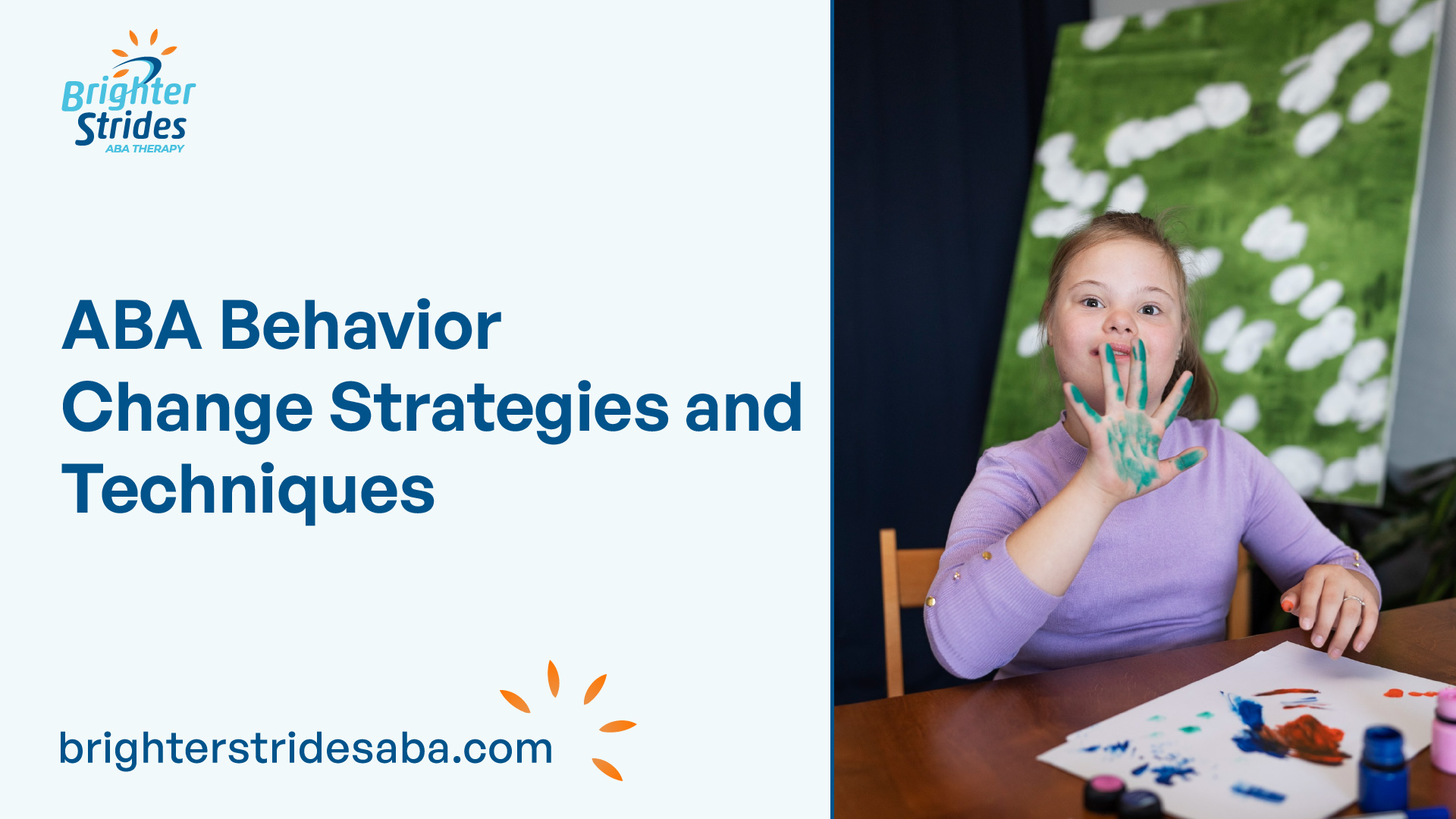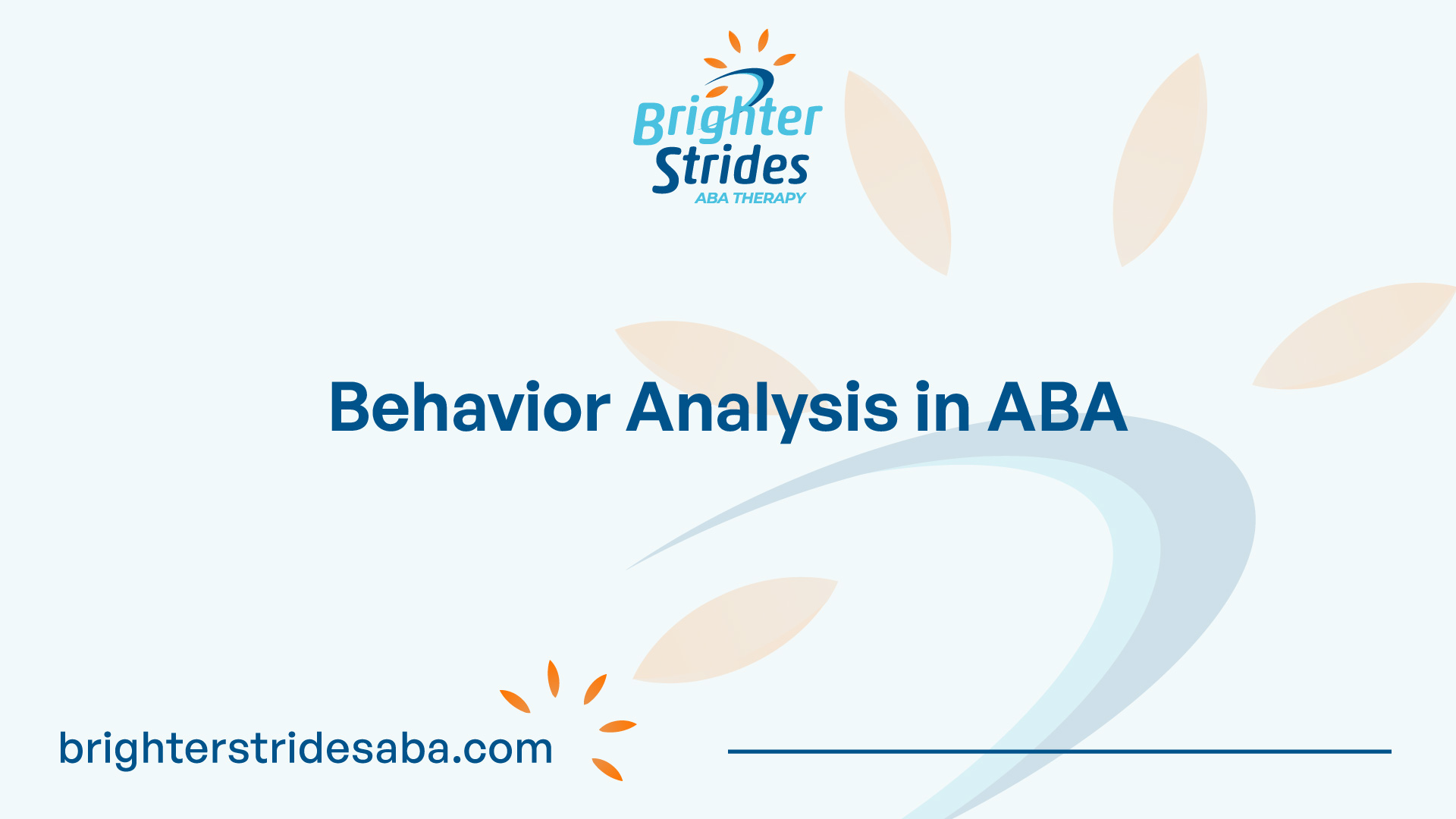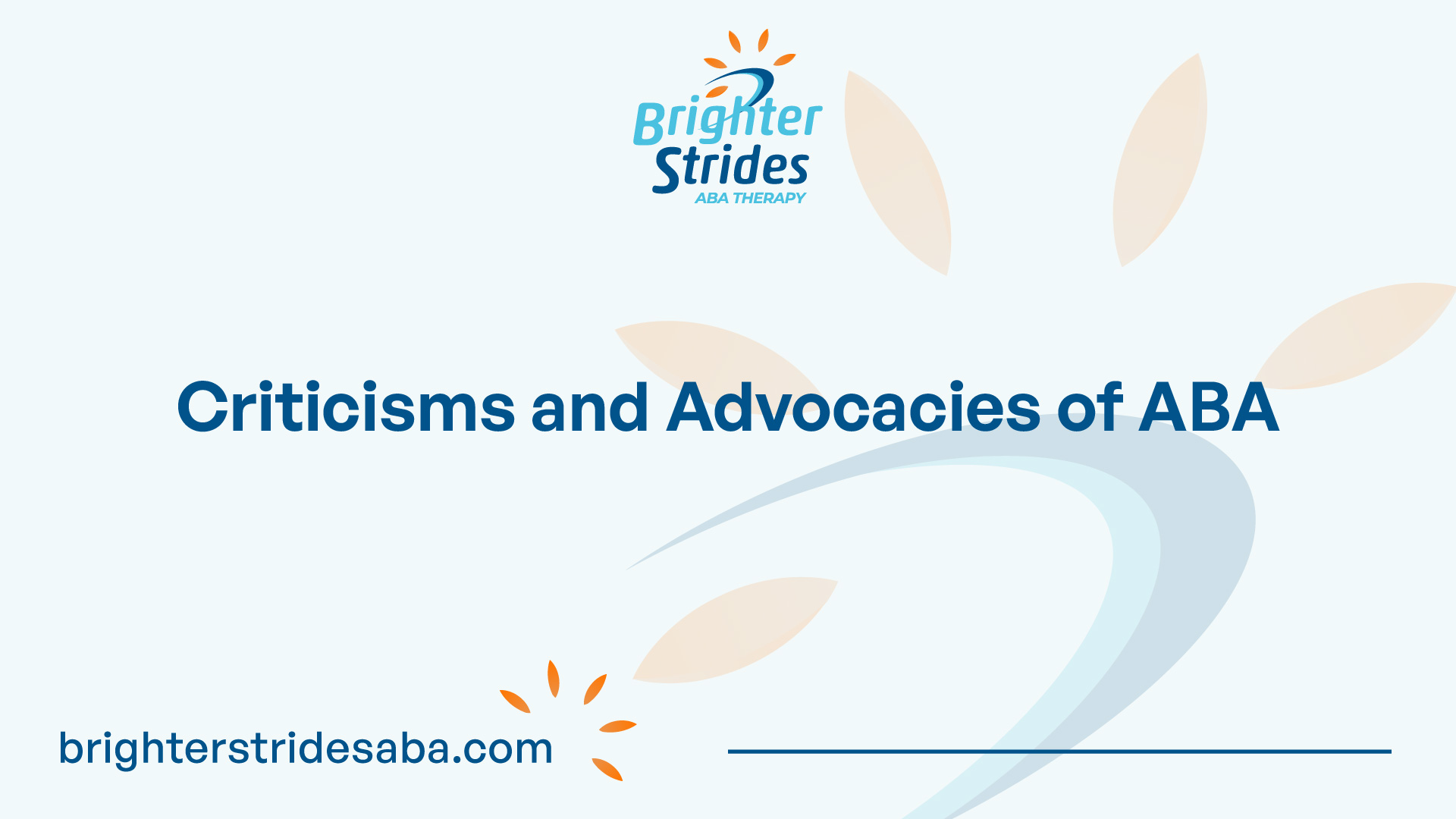
Understanding ABA Therapy
Applied Behavior Analysis (ABA) therapy is a scientifically validated approach to understanding and changing behavior. It has been widely used to support individuals with autism and related developmental differences. ABA therapy involves the systematic application of behavior principles to improve socially significant behaviors and enhance the quality of life for individuals and their families.
Data Collection Methods in ABA
In ABA therapy, various data collection methods are utilized to systematically observe, record, and measure behavior. These methods allow ABA therapists to gather objective data, monitor progress, and make data-driven decisions to modify and refine behavior intervention plans. The choice of data collection method depends on the specific behavior being targeted, the individual’s needs, and the goals of the intervention.
Some common data collection methods in ABA therapy include:
- Direct Observation: ABA therapists directly observe and record behavior in real-time. This method provides accurate and detailed information about the frequency, duration, and intensity of the behavior of interest.
- ABC Data Collection: ABC stands for Antecedent-Behavior-Consequence. ABA therapists collect data on the events that occur before and after a behavior to identify patterns and potential triggers or reinforcers. This information helps in understanding the function of the behavior and developing effective behavior intervention plans.
- Time Sampling: This method involves dividing the observation period into smaller time intervals. ABA therapists record whether the behavior of interest occurs within each interval. Time sampling is useful when continuous observation is not feasible.
- Event Recording: ABA therapists record each occurrence of a specific behavior. This method is particularly useful for behaviors that have a clear beginning and end, such as hand-flapping or head-banging.
- Interval Recording: ABA therapists divide the observation period into intervals and record whether the behavior occurs or does not occur within each interval. Interval recording is helpful for behaviors that have a longer duration or occur at a low frequency.
- Permanent Product Recording: This method involves documenting the tangible outcomes or products resulting from a behavior. For example, if the goal is to increase independent play skills, the therapist may record the number of toys put away or puzzles completed.
Evolution and Effectiveness of ABA
ABA therapy has a long history of development and refinement. Therapists have been using ABA techniques to assist children with autism and related developmental disorders since the 1960s. Over the years, extensive research and empirical evaluations have demonstrated the effectiveness of ABA in improving outcomes for many individuals with autism.
More than 20 studies have established that intensive and long-term therapy using ABA principles improves outcomes for many children with autism. Programs that provide 25 to 40 hours a week of therapy for 1 to 3 years have shown gains in intellectual functioning, language development, daily living skills, and social functioning. ABA is considered an evidence-based best practice treatment by the US Surgeon General and the American Psychological Association, and it has passed scientific tests of its usefulness, quality, and effectiveness [2].
The effectiveness of ABA therapy is supported by a substantial body of literature. Various behavior analytic procedures, such as shaping, discrete trial teaching, incidental teaching, pivotal response training, and naturalistic developmental behavioral interventions, have been shown to be effective for individuals diagnosed with Autism Spectrum Disorder (ASD). The methods informed by applied behavior analysis (ABA) are widely recognized as the most effective interventions for individuals diagnosed with ASD, endorsed by multiple organizations including Autism Speaks and The Association for Behavior Analysis International.
The evolution and effectiveness of ABA therapy have contributed to its widespread use and recognition as a leading intervention approach for individuals with autism and related developmental differences. Through the use of data collection methods and evidence-based techniques, ABA therapists can develop tailored treatment plans and achieve meaningful behavior change and skill development for individuals undergoing ABA therapy.
Implementing ABA Therapy
When it comes to implementing Applied Behavior Analysis (ABA) therapy, several key factors come into play. This section will explore the use of positive reinforcement in ABA, the roles involved in ABA therapy, and the importance of starting ABA therapy early.
Positive Reinforcement in ABA
Positive reinforcement is one of the main strategies used in ABA therapy. It involves providing a reward or something valued to reinforce a desired behavior. When a behavior is followed by a reward, individuals are more likely to repeat that behavior, encouraging positive behavior change. In the context of ABA therapy, positive reinforcement is used to encourage and increase the frequency of desired behaviors in children on the autism spectrum.
Studies have shown that incorporating positive reinforcement in ABA therapy can be effective in shaping behavior. By providing rewards or incentives following a desired behavior, therapists can help instill and reinforce positive behaviors over time [4]. The use of positive reinforcement is tailored to the individual’s needs and preferences, ensuring that the rewards are motivating and meaningful.
Roles in ABA Therapy
ABA therapy involves a collaborative effort among professionals and caregivers. The key role in ABA therapy is that of a board-certified behavior analyst (BCBA). The BCBA is responsible for developing and overseeing the ABA therapy program, including the assessment, analysis, and implementation of behavior interventions. They design individualized treatment plans, provide ongoing supervision, and evaluate progress.
In addition to the BCBA, ABA therapy programs also involve therapists who directly work with the individuals receiving therapy. These therapists, often referred to as registered behavior technicians (RBTs), are trained and supervised by the BCBA. They play a crucial role in implementing the ABA therapy interventions and collecting data on the individual’s progress. The RBTs work closely with the BCBA to ensure consistency and continuity in therapy.
Starting ABA Therapy Early
The timing of ABA therapy is important for optimal outcomes. Research suggests that starting ABA therapy as early as possible yields the best results, particularly for children on the autism spectrum. Beginning ABA therapy before the age of four can significantly enhance a child’s development, improving social and communication skills and facilitating interactions with peers.
By starting ABA therapy early, children have the opportunity to learn and practice skills at a crucial stage of their development. Early intervention allows for targeted interventions that address specific needs and challenges, helping children build a strong foundation for future learning and development.
It’s worth noting that the recommended hours of ABA therapy can vary depending on the child’s needs and goals. ABA therapy services typically recommend at least 15 hours per week, with some children receiving up to 40 hours per week. The speed of progress may depend on factors such as the number of therapy hours, the child’s current abilities, the severity of problem behaviors, parental involvement, and the generalization of learned skills into everyday life.
Implementing ABA therapy involves the use of positive reinforcement, a collaborative effort among professionals and caregivers, and early intervention. By incorporating these strategies, ABA therapy aims to promote positive behavior change, enhance developmental outcomes, and improve the quality of life for individuals on the autism spectrum.

Behavior Analysis in ABA
Behavior analysis is a fundamental aspect of Applied Behavior Analysis (ABA) and plays a crucial role in understanding and modifying behavior. In this section, we will explore three key components of behavior analysis in ABA: ABC data collection, the function of behavior, and behavior intervention plans.
ABC Data Collection
ABC data collection is a foundational technique in ABA and offers a framework for understanding behavior. The term “ABC” refers to the antecedent, behavior, and consequence, which are the three components that contribute to a greater understanding of why behavior occurs. Professionals in the field of ABA often refer to ABC data as the “3-term contingency”. Let’s take a closer look at each component:
- Antecedent (A): The antecedent is the event or circumstance that occurs immediately before the behavior of interest. It provides valuable information about the triggers or environmental factors that influence behavior. Identifying antecedents can help determine patterns and potential behavior triggers [7].
- Behavior (B): The behavior refers to the specific action or response being observed and recorded. It is essential to describe the behavior in clear and objective terms to ensure consistency and accuracy in data collection.
- Consequence (C): The consequence is the event or outcome that follows the behavior. It can either reinforce or punish the behavior and has an impact on whether the behavior is likely to occur again in the future.
By systematically collecting ABC data, behavior analysts can identify patterns and relationships between antecedents, behaviors, and consequences. This information serves as a foundation for developing effective behavior intervention plans and strategies to promote positive behavior change.
Function of Behavior in ABA
Understanding the function of behavior is a critical step in behavior analysis within the context of ABA. The function refers to the purpose or motive behind a particular behavior. By determining the function of behavior, behavior analysts can develop appropriate interventions to address the underlying causes and support behavior change.
ABC data collection is an integral component when conducting a Functional Behavior Assessment (FBA) to hypothesize the function of the target behavior. This descriptive analysis allows for the development of a plan to alter the maintaining variables and change behavior. The antecedent, behavior, and consequence data collected through ABC analysis provide valuable insight into the environmental factors that influence behavior and can help identify the function of the behavior.
Understanding the function of behavior allows behavior analysts to tailor interventions and strategies to address specific needs. For example, if a behavior serves the function of escaping or avoiding a task, interventions may focus on teaching alternative coping skills or providing support to make the task more manageable.
Behavior Intervention Plans
Behavior intervention plans (BIPs) are developed based on the insights gained from ABC data collection and the understanding of the function of behavior. A BIP outlines strategies and techniques to address challenging behaviors and promote positive behavior change.
A well-designed BIP includes specific, measurable, achievable, relevant, and time-bound (SMART) goals, along with intervention strategies targeting the identified function of the behavior. It may incorporate positive reinforcement, teaching alternative skills, modifying the environment, and utilizing appropriate consequences to shape behavior.
Behavior intervention plans are individualized and tailored to the unique needs of each individual. They provide a roadmap for behavior analysts, caregivers, and educators to work collaboratively and consistently in implementing effective strategies to support behavior change.
By utilizing behavior analysis techniques, such as ABC data collection, understanding the function of behavior, and developing behavior intervention plans, ABA practitioners can make significant strides in promoting positive behavior change and improving the quality of life for individuals receiving ABA therapy.
Setting ABA Therapy Goals
In ABA therapy, setting specific and measurable goals is a crucial aspect of the treatment process. These goals are tailored to the individual needs of the child and serve as the foundation for their progress and development. Behavior analysts work closely with the child and their caregivers to create comprehensive treatment plans that address specific behaviors and contribute to larger objectives.
Tailored Treatment Plans
ABA therapy aims to transform specific behaviors into concrete steps that contribute to broader goals. Treatment plans are evidence-based and focus on various areas of development, such as daily routines, expressive communication, receptive language skills, social skills, and community skills. These targets are customized to suit the child’s unique needs, fostering overall self-sufficiency and improving behavior in natural environments.
Prerequisite Skills in ABA
Achieving ABA therapy goals often involves targeting prerequisite skills that provide a foundation for more complex objectives. Before working towards broader goals, behavior analysts assess and address foundational skills that support the child’s progress. For example, improving a child’s ability to follow directions may involve assessing skills such as scanning an array of items, attending to a speaker, and imitating instructions. By building these prerequisite skills, the child can better achieve their overall goals.
Hours of ABA Therapy
The number of hours of ABA therapy a child receives plays a significant role in their progress. ABA therapy services typically recommend a minimum of 15 hours per week to ensure steady advancement, with some children receiving up to 40 hours per week. The pace of progress can be influenced by factors such as the number of therapy hours, the child’s current abilities, the severity of problem behaviors, the level of parent involvement, and how learned skills are integrated into everyday life. It is important for caregivers and behavior analysts to maintain ongoing communication to ensure program success.
By developing tailored treatment plans, targeting prerequisite skills, and considering the appropriate number of therapy hours, ABA therapy maximizes its effectiveness in supporting individuals with behavior challenges. These goals serve as benchmarks for progress and guide the overall therapeutic journey, ultimately helping individuals achieve greater independence and improve their quality of life.

Criticisms and Advocacies of ABA
As with any therapeutic approach, Applied Behavior Analysis (ABA) has faced both criticisms and advocacies. It’s important to understand these perspectives in order to have a comprehensive view of ABA therapy and its impact on individuals.
Controversies in ABA
Historically, ABA therapy has evolved from its early version, Discrete Trial Training (DTT), developed in the 1960s by Dr. O. Ivaar Lovaas. The early methods included the use of both positive reinforcement and punishment, including aversive methods like electric shocks, to reduce self-injurious behaviors in residential settings. However, it’s crucial to note that the use of punishments, including electric shocks, is no longer considered acceptable in ABA therapy. Modern ABA therapy has moved away from these aversive techniques and focuses on positive reinforcement and skill-building.
Critics of ABA therapy have expressed concerns about the perceived repetitiveness and intensity of the therapy. There have been concerns that the skills learned through ABA therapy may not generalize to other situations. However, it’s important to recognize that modern ABA therapy is often less repetitive and more play-based, with therapists trained to make learning fun and engaging for the child. The therapy is designed to be individualized and tailored to the unique needs of each child [8].
Another criticism of ABA therapy is the perception that it focuses primarily on eliminating behaviors rather than building skills. Some practitioners within the field acknowledge this concern and emphasize the importance of focusing on what children should be doing rather than what they shouldn’t be doing, shifting the focus to skill development [8].
Advocating for Neurodiversity
Some autistic self-advocates and neurodiversity activists have expressed reservations about ABA therapy, suggesting alternative approaches. They argue that ABA therapy aims to make autistic children fit neurotypical standards, which they believe is inappropriate as autistic children have different needs. Instead, they advocate for approaches like speech and language therapy, which they believe can better support the development of skills and independence in autistic children.
On the other hand, defenders of ABA therapy argue that the goal is not to change the way neurodiverse children think and feel but to help them build on their strengths and participate in society as much as possible. ABA therapy is seen as a means to enable independence while accepting and embracing neurodiversity. The focus is on empowering individuals to reach their full potential while recognizing and respecting their unique characteristics.
It’s essential to acknowledge the concerns and criticisms raised by activists and individuals within the autism community while also considering the perspectives of those who advocate for ABA therapy. Ongoing discussions and advancements in the field of ABA continue to shape and refine the practice, aiming to provide the most effective and inclusive support for individuals with autism and other developmental differences.
ABA Applications Beyond Autism
While Applied Behavior Analysis (ABA) is most commonly associated with its effectiveness in treating individuals with autism, its applications extend beyond this specific population. ABA techniques are utilized in various industries, contributing to improved outcomes in education, business, and mental health treatment.
ABA Techniques in Various Industries
In the field of education, ABA techniques play a crucial role in classroom management, particularly in special education programs for students on the autism spectrum. By implementing ABA strategies, educators can create structured environments and support students in developing essential skills. These techniques aid in behavior modification, promoting positive behaviors and reducing challenging behaviors.
In the business world, ABA helps organizations understand consumer behavior and enhance organizational behavior management. By applying ABA principles, businesses can analyze customer interactions, improve customer satisfaction, and develop effective marketing strategies. ABA techniques provide valuable insights into consumer decision-making processes, leading to more successful business outcomes.
Additionally, ABA is combined with cognitive treatment techniques in mental health treatment. This integration allows therapists to address behavioral components of various disorders, including depression, anxiety, schizophrenia, anorexia, and attention deficit disorder (ADD). By incorporating ABA strategies into treatment plans, therapists can focus on modifying behaviors that contribute to these conditions, leading to improved outcomes for individuals seeking mental health support.
Career Paths in ABA
The field of ABA offers diverse career opportunities for individuals interested in helping others and understanding behavior. Professionals in ABA can pursue careers in special education, social work, psychology, psychiatry, nursing, and other related fields. ABA expertise provides a strong foundation for understanding individuals and devising holistic treatment plans [9].
Formal training in ABA is highly beneficial for individuals seeking to enhance their career prospects and gain a deeper understanding of the discipline. Graduate-level programs in ABA provide comprehensive knowledge and practical skills necessary to excel in this field. These programs cover topics such as aba behavior support plans, aba skill training, aba program supervision, aba clinical supervision, aba therapy reimbursement, aba research methods, aba therapy sessions, and aba therapy curriculum.
By pursuing formal training and gaining hands-on experience, individuals can build a successful career in ABA and make a positive impact on the lives of those they serve.

 We've just released an article!
Check out our blog!
We've just released an article!
Check out our blog!



